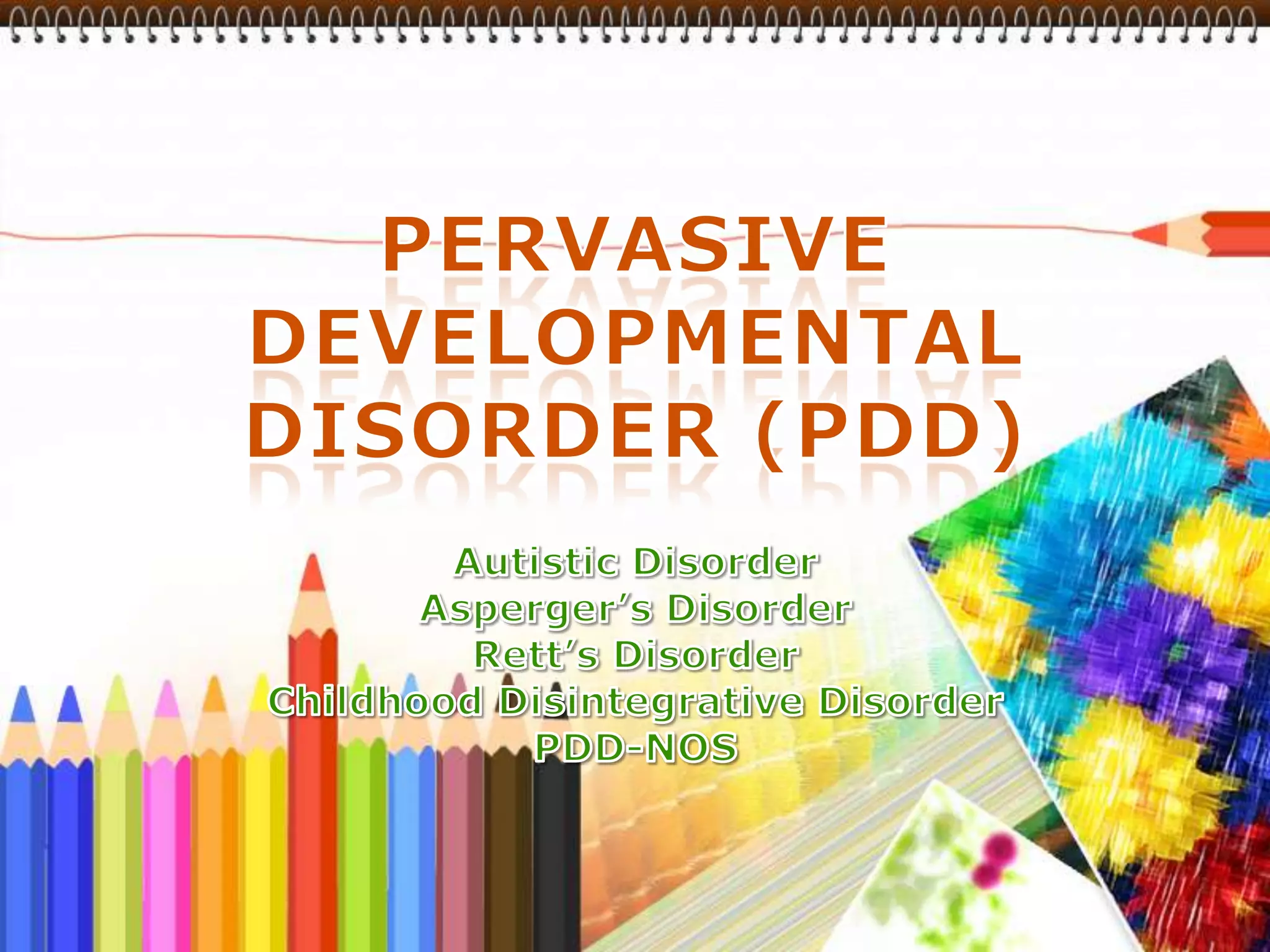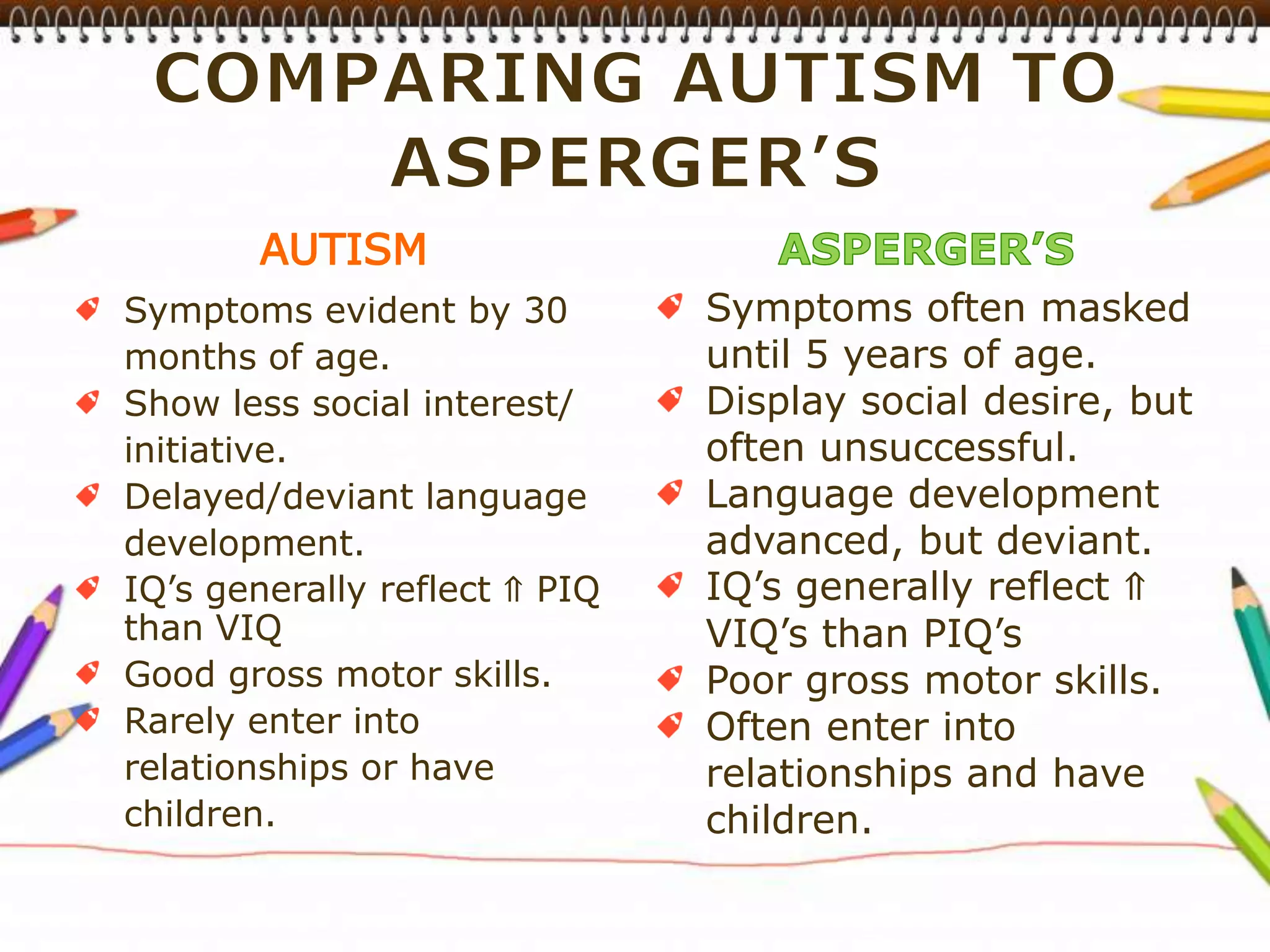This document provides information about pervasive developmental disorders including autism spectrum disorders like autistic disorder, Asperger's disorder, childhood disintegrative disorder, and PDD-NOS. It describes the common characteristics of autism such as social skills, communication skills, and behavioral issues. It discusses the official DSM-IV diagnosis of autism and outlines best educational practices and treatments including applied behavior analysis, sensory integration therapy, and social stories. The document also provides information specific to Asperger's disorder including Hans Asperger's description and the DSM-IV diagnostic criteria.

























































